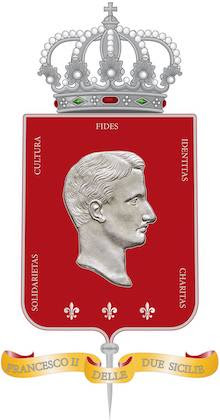 |
| Gulf of Naples |
 According to one legend the 'Ndrezzata was taught to local villagers by the island's nymphs. It was supposed to remind them of happier days when the spirits of the wood gaily danced to the celestial sounds of Apollo's golden lyre. During the sybaritic festivities the sun god fell in love with the beautiful nymph, Coronis, and the two conceived a child, Asclepius, the god of healing and medicine. Blessed, the island became famous for its therapeutic qualities.
According to one legend the 'Ndrezzata was taught to local villagers by the island's nymphs. It was supposed to remind them of happier days when the spirits of the wood gaily danced to the celestial sounds of Apollo's golden lyre. During the sybaritic festivities the sun god fell in love with the beautiful nymph, Coronis, and the two conceived a child, Asclepius, the god of healing and medicine. Blessed, the island became famous for its therapeutic qualities. |
A View of Ischia from the Sea (1842)
by Jean-Charles-Joseph Rémond (1795-1875)
|
Colonized by Euboean Greeks during the first half of the eighth century BC, it has been suggested the martial aspects of the dance harken back to the military prowess of the ancient Hellenic warriors. Others say the custom doesn't date from the Classical Era, but simply recalls a military victory over Saracen raiders during the sixteenth century. Considering the great frequency and ferocity of these attacks (in one raid alone the infamous Turkish corsair, Barbarossa, captured 4,000 slaves) any success in repelling the invaders would be worth celebrating.
Nevertheless, the most popular interpretation claims the dance represents the reconciliation between the neighboring villages of Barano and Buonopane. In 1540 a Baranese boy fell in love with a Buonopanese girl. He secretly gave her a belt made of coral as a token of his love and symbolizing their union. The transgression was discovered by a rival suitor and led to an open feud between their clans. A battle ensued, but thanks to the divine intervention of the Madonna della Porta cooler heads prevailed and the belt was burned at the Church of San Giovanni Battista on Lunedì dell’Angelo (Easter Monday), satisfying both parties. It remains unclear who got the girl.
Tradition has it that one cannot be taught the 'Ndrezzata, it's a special gift bestowed at birth to the people of Ischia from the nymphs of Nitrodi. The dance is performed only twice a year — during Easter Monday and Midsummer (June 24th), the feast day of St. John the Baptist, patron saint of Buonopane. Whatever its true origins, the 'Ndrezzata is a beautiful reminder of the long history and rich heritage of Southern Italy.
~ Giovanni di Napoli









